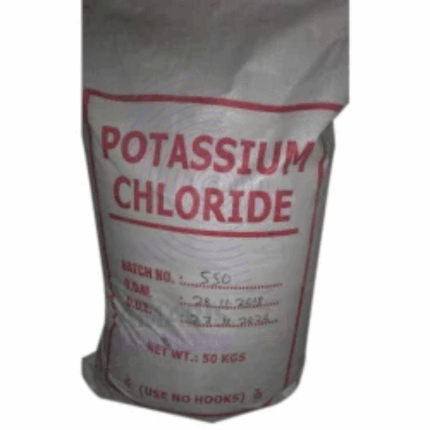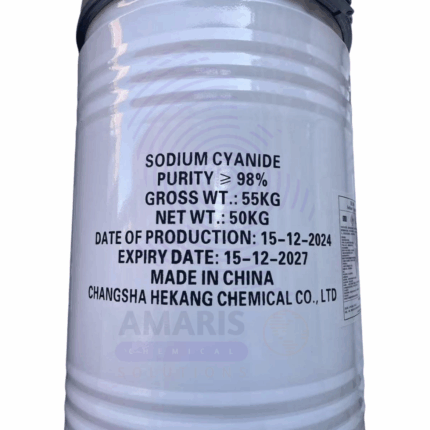Nickel Sulphate
Whatsapp Order
Nickel Sulphate is an inorganic compound consisting of nickel and sulfate ions, typically found as a green crystalline solid. It is highly soluble in water and widely used as a key raw material in electroplating, chemical synthesis, and battery manufacturing. Nickel Sulphate plays a crucial role in producing nickel metal coatings, catalysts, pigments, and in the preparation of other nickel compounds. Due to its versatile chemical properties, it is essential in various industrial processes.
Description
Table of Contents
Toggle
Nickel Sulphate
Primary Uses
- Electroplating Industry
- Used extensively in nickel electroplating baths to provide corrosion-resistant and decorative coatings on metals.
- Employed for plating automotive parts, electronics, and household appliances.
- Battery Manufacturing
- Essential component in the production of nickel-cadmium (NiCd) and nickel-metal hydride (NiMH) rechargeable batteries.
- Chemical Industry
- Used in the synthesis of other nickel compounds such as nickel catalysts and nickel salts.
- Acts as a catalyst in hydrogenation and other chemical reactions.
- Pigments and Ceramics
- Used to produce green pigments for ceramics, glass, and paints.
Secondary Uses
- Electronics Industry
- Used in the manufacturing of electronic components and semiconductors.
- Laboratory Reagent
- Employed in laboratories for qualitative inorganic analysis and as a source of nickel ions.
- Catalysts
- Utilized in various catalytic processes in the petrochemical and pharmaceutical industries.
- Metal Treatment
- Used in metal finishing and surface treatment processes to improve corrosion resistance.
KEY PPRODUCT FEATURES
1. Basic Identification Attributes
- Chemical Name (IUPAC): Nickel(II) sulfate hexahydrate
- Common/Trade Name: Nickel Sulphate
- CAS Number: 7786-81-4
- HS Code: 2833.29.00
- Synonyms: Nickel sulfate, Nickel sulphate hexahydrate
2. Physical & Chemical Properties
- Physical State: Green crystalline solid
- Color & Odor: Green; odorless
- Solubility: Highly soluble in water
- Molecular Formula: NiSO₄·6H₂O (common hexahydrate form)
- Density: Approx. 2.38 g/cm³ (hexahydrate)
3. Safety & Hazard Attributes
- GHS Classification: Carcinogenic (Category 1B), harmful if inhaled or swallowed, skin sensitizer
- Toxicity: Toxic by ingestion and inhalation; may cause allergic skin reactions and respiratory sensitization
- Exposure Limits: Strict occupational exposure limits due to carcinogenicity
4. Storage & Handling Attributes
- Storage Conditions: Store in a cool, dry, well-ventilated area, away from incompatible materials such as strong oxidizers and reducing agents
- Container Type: Supplied in sealed plastic or metal drums
- Shelf Life: Stable for several years if stored properly
- Handling Precautions: Use personal protective equipment (PPE) to avoid inhalation and skin contact
5. Regulatory & Compliance Attributes
- Complies with REACH and OSHA regulations for hazardous chemicals
- Listed under hazardous substances due to carcinogenic and sensitizing properties
- Must be handled following strict environmental and safety regulations
6. Environmental & Health Impact
- Biodegradability: Not biodegradable
- Ecotoxicity: Highly toxic to aquatic life with long-lasting effects
- Bioaccumulation: Potential for bioaccumulation in aquatic organisms
- Carcinogenicity/Mutagenicity: Classified as a carcinogen; mutagenic potential under study
SAFETY HANDLING PRECAUTIONS
Safety Handling Precautions
- PPE Required: Use gloves, protective clothing, eye protection, and respirators as necessary
- Handling Guidelines: Use in well-ventilated areas or fume hoods; avoid dust and mist formation
- Storage Measures: Keep containers tightly closed; store away from incompatible substances
First Aid Measures
- Inhalation: Move to fresh air immediately; seek medical attention if breathing difficulties occur
- Skin Contact: Wash thoroughly with soap and water; seek medical help if rash or irritation develops
- Eye Contact: Rinse cautiously with water for at least 15 minutes; obtain medical attention if irritation persists
- Ingestion: Do not induce vomiting; seek immediate medical attention
Firefighting Measures
- Fire Hazards: Not flammable but may decompose to release toxic gases when heated
- Extinguishing Media: Use water spray, foam, dry chemical, or CO₂ extinguisher
- Special Precautions: Use self-contained breathing apparatus (SCBA) to avoid inhalation of hazardous fumes
- Hazardous Combustion Products: Nickel oxides, sulfur oxides, and other toxic gases
Related products
Ammonia Acetate
Ammonium Acetate (NH4CH3COO) is a white crystalline solid or granular powder with a mild ammoniacal odor. It is a salt formed from ammonia and acetic acid, widely used in laboratories, industrial processes, and some niche food and pharmaceutical applications. Ammonium Acetate is highly soluble in water and often utilized as a buffer solution in biochemical and analytical chemistry due to its ability to maintain pH. It also serves as a precursor in the synthesis of various chemicals and acts as a neutralizing agent in several industrial applications.
Ammonium Cupric Chloride
Ammonium Cupric Chloride is a blue-green crystalline inorganic compound composed of copper, ammonium, and chloride ions. It is widely used as a source of copper in agricultural fungicides and bactericides, as well as in electroplating, chemical synthesis, and textile dyeing. Its antimicrobial properties make it valuable for controlling fungal and bacterial infections in plants. Additionally, it serves as a precursor in various industrial and laboratory applications.
Ammonium Sulphate
$ 1.18
Ammonium Sulphate is an inorganic salt with the formula (NH₄)₂SO₄. It appears as a white crystalline solid, highly soluble in water, and is widely used as a fertilizer due to its high nitrogen and sulfur content. Besides agriculture, ammonium sulphate finds extensive use in industrial processes, food additives, pharmaceutical applications, and water treatment. It acts as a soil amendment to improve nitrogen levels and acidity, a flocculating agent in water purification, and a stabilizer or precipitant in biochemical and pharmaceutical formulations.
Dipotassium Hydrogen Phosphate
Dipotassium Hydrogen Phosphate (also known as dipotassium phosphate, DKP) is an inorganic salt used widely as a buffering agent, emulsifier, and nutritional supplement in various industries. It is a white, crystalline, highly water-soluble powder with alkaline properties. DKP plays a vital role in food processing, pharmaceuticals, water treatment, and agriculture due to its ability to stabilize pH, improve texture, and supply essential potassium and phosphate ions.
Nickel Sulphate Extra Pure
Nickel Sulphate Extra Pure is a crystalline, green-colored compound of high purity, widely utilized in analytical, electrochemical, and industrial applications. It is primarily used in electroplating processes to deposit a uniform layer of nickel onto metal surfaces, enhancing corrosion resistance and aesthetic appeal. Its consistent composition makes it ideal for high-precision electroforming and battery component manufacturing, especially in nickel-cadmium and nickel-metal hydride batteries.
In laboratories, it serves as a reagent for chemical analysis, particularly in qualitative and quantitative detection of nickel ions. It is also involved in catalyst production, ceramic coloring, and metal surface treatment. The Extra Pure grade guarantees minimal impurities, ensuring reliable performance in sensitive experimental setups. Due to its toxic and irritant nature, it should be handled with appropriate personal protective equipment and stored in a cool, dry place in tightly closed containers.
Orbit LCD
Orbit LCD is a concentrated liquid chemical dispersant designed to improve the dispersion of pigments, fillers, and other particulate materials in coatings, paints, inks, and adhesives. It enhances color uniformity, stability, and rheological properties of formulations by reducing particle agglomeration and sedimentation. With excellent compatibility in waterborne and solvent-based systems, Orbit LCD 48% is widely used in industrial and decorative coatings for optimal performance.
Potassium Chloride BP
Potassium Chloride BP (British Pharmacopoeia grade) is a high-purity, pharmaceutical-grade potassium salt widely used in medical, agricultural, and industrial applications. It is a white crystalline solid that is highly soluble in water and serves as an essential source of potassium ions in various biochemical and physiological processes. The BP grade ensures strict compliance with purity and quality standards, making it suitable for pharmaceutical formulations and clinical use.
Sodium Cyanide
Sodium Cyanide is a highly toxic, white crystalline compound used primarily in the mining industry for gold and silver extraction via cyanidation. It acts as a powerful chemical reagent and is employed in various industrial processes including metal plating, chemical synthesis, and organic chemistry. Due to its hazardous nature, strict handling and storage protocols are essential.


 Preservatives(food)
Preservatives(food) Flavor Enhancers
Flavor Enhancers Acidulants
Acidulants Sweeteners
Sweeteners Antioxidants
Antioxidants Colorants(food)
Colorants(food) Nutraceutical Ingredients (food)
Nutraceutical Ingredients (food) Nutrient Supplements
Nutrient Supplements Emulsifiers
Emulsifiers
 Collectors
Collectors Dust Suppressants
Dust Suppressants Explosives and Blasting Agents
Explosives and Blasting Agents Flocculants and Coagulants
Flocculants and Coagulants Frothers
Frothers Leaching Agents
Leaching Agents pH Modifiers
pH Modifiers Precious Metal Extraction Agents
Precious Metal Extraction Agents
 Antioxidants(plastic)
Antioxidants(plastic) Colorants (Pigments, Dyes)
Colorants (Pigments, Dyes) Fillers and Reinforcements
Fillers and Reinforcements Flame Retardants
Flame Retardants Monomers
Monomers Plasticizers
Plasticizers Polymerization Initiators
Polymerization Initiators Stabilizers (UV, Heat)
Stabilizers (UV, Heat)
 Antifoaming Agents
Antifoaming Agents Chelating Agents
Chelating Agents Coagulants and Flocculants
Coagulants and Flocculants Corrosion Inhibitors
Corrosion Inhibitors Disinfectants and Biocides
Disinfectants and Biocides Oxidizing Agents
Oxidizing Agents pH Adjusters
pH Adjusters Scale Inhibitors( water)
Scale Inhibitors( water)
 Antioxidants(cosmetic)
Antioxidants(cosmetic) Emollients
Emollients Fragrances and Essential Oils
Fragrances and Essential Oils Humectants
Humectants Preservatives
Preservatives Surfactants(cosmetic)
Surfactants(cosmetic) Thickeners
Thickeners UV Filters
UV Filters
 Fertilizers
Fertilizers Soil Conditioners
Soil Conditioners Plant Growth Regulators
Plant Growth Regulators Animal Feed Additives
Animal Feed Additives Biostimulants
Biostimulants Pesticides (Herbicides, Insecticides, Fungicides)
Pesticides (Herbicides, Insecticides, Fungicides)
 Active Pharmaceutical Ingredients (APIs)
Active Pharmaceutical Ingredients (APIs) Excipients
Excipients Solvents(pharmaceutical)
Solvents(pharmaceutical) Antibiotics
Antibiotics Antiseptics and Disinfectants
Antiseptics and Disinfectants Vaccine Adjuvants
Vaccine Adjuvants Nutraceutical Ingredients (pharmaceutical)
Nutraceutical Ingredients (pharmaceutical) Analgesics & Antipyretics
Analgesics & Antipyretics
 Analytical Reagents
Analytical Reagents Solvents(lab)
Solvents(lab) Chromatography Chemicals
Chromatography Chemicals Spectroscopy Reagents
Spectroscopy Reagents microbiology-and-cell-culture-reagents
microbiology-and-cell-culture-reagents Molecular Biology Reagents
Molecular Biology Reagents Biochemical Reagents
Biochemical Reagents Inorganic and Organic Standards
Inorganic and Organic Standards Laboratory Safety Chemicals
Laboratory Safety Chemicals Specialty Laboratory Chemicals(Special Laboratory Equipment)
Specialty Laboratory Chemicals(Special Laboratory Equipment)
 Demulsifiers
Demulsifiers Hydraulic Fracturing Fluids
Hydraulic Fracturing Fluids Scale Inhibitors(oil)
Scale Inhibitors(oil) Surfactants(oil)
Surfactants(oil) Drilling Fluids
Drilling Fluids
 Dyes and Pigments
Dyes and Pigments Bleaching Agents
Bleaching Agents Softening Agents
Softening Agents Finishing Agents
Finishing Agents Antistatic Agents
Antistatic Agents
 Admixtures
Admixtures Waterproofing Agents
Waterproofing Agents Sealants and Adhesives
Sealants and Adhesives Curing Compounds
Curing Compounds Concrete Repair Chemicals
Concrete Repair Chemicals Anti-Corrosion Coatings
Anti-Corrosion Coatings
 Surfactants(cleaning)
Surfactants(cleaning) Builders
Builders Enzymes
Enzymes Solvents (Cleaning)
Solvents (Cleaning) Fragrances
Fragrances
 Electronic Chemicals
Electronic Chemicals Catalysts
Catalysts Lubricants
Lubricants Photographic Chemicals
Photographic Chemicals Refrigerants
Refrigerants Automotive chemicals
Automotive chemicals Pyrotechnic Chemicals
Pyrotechnic Chemicals
 Biodegradable Surfactants
Biodegradable Surfactants Bio-based Solvents
Bio-based Solvents Renewable Polymers
Renewable Polymers Carbon Capture Chemicals
Carbon Capture Chemicals Wastewater Treatment Chemicals
Wastewater Treatment Chemicals
 Pigments
Pigments Solvents(paint)
Solvents(paint) Specialty Coatings
Specialty Coatings Binders/Resins
Binders/Resins Additives
Additives Driers
Driers Anti-Corrosion Agents
Anti-Corrosion Agents Functional Coatings
Functional Coatings Application-Specific Coatings
Application-Specific Coatings
 Fresh Herbs
Fresh Herbs Ground Spices
Ground Spices Whole Spices
Whole Spices Spice Blends
Spice Blends Dried Herbs
Dried Herbs
 Leavening Agents
Leavening Agents Dough Conditioners
Dough Conditioners Flour Treatments
Flour Treatments Fat Replacers
Fat Replacers Decoratives
Decoratives Preservatives(baking)
Preservatives(baking)
 Plasticizers & Softeners
Plasticizers & Softeners Reinforcing Agents
Reinforcing Agents Adhesion Promoters
Adhesion Promoters Vulcanizing Agents
Vulcanizing Agents Antidegradants
Antidegradants Blowing Agents
Blowing Agents Fillers & Extenders
Fillers & Extenders Accelerators & Retarders
Accelerators & Retarders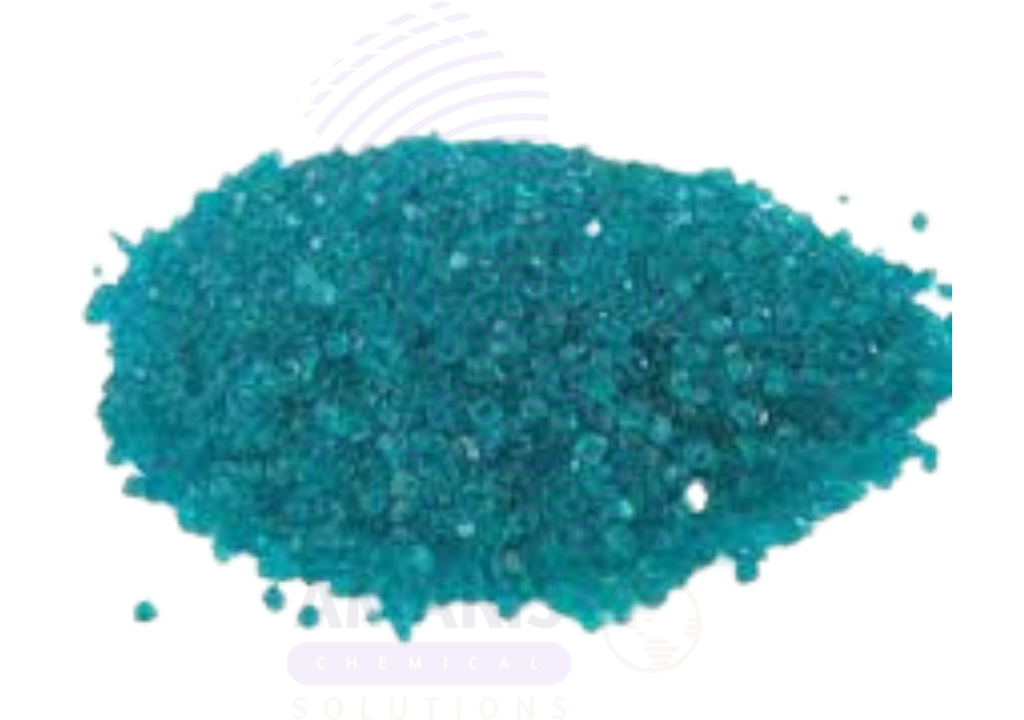
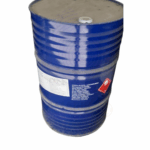
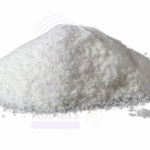


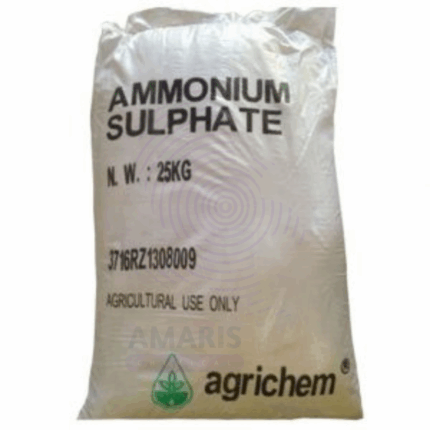
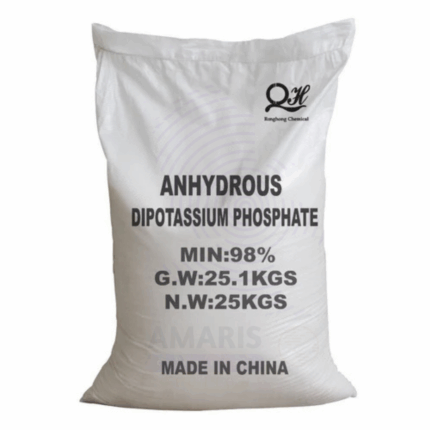
![Nickel Sulphate [NiSO4(H2O)6] Extra Pure Amaris Chemicals](https://amarischemicalsolutions.com/wp-content/uploads/2025/08/Nickel-Sulphate-NiSO4H2O6-Extra-Pure-Amaris-Chemicals-430x430.png)
